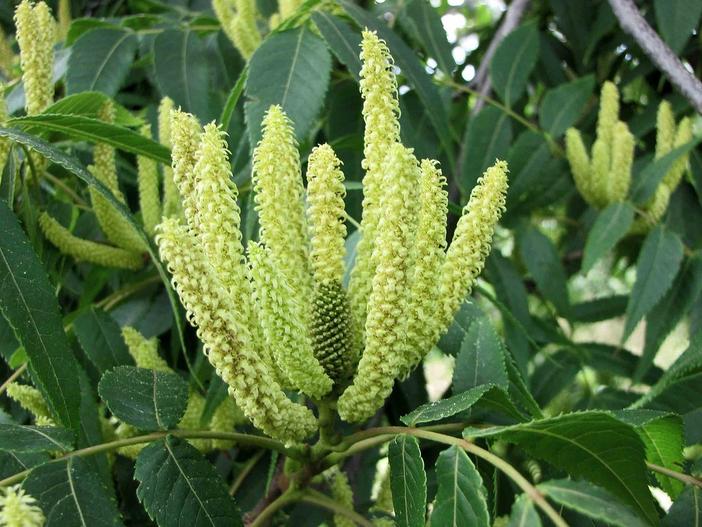Platycarya
(Platycarya strobilacea)
Platycarya (Platycarya strobilacea)
/
/

阿橋花譜 HQ Flower Guide
CC BY-SA 2.0
Image By:
阿橋花譜 HQ Flower Guide
Recorded By:
Copyright:
CC BY-SA 2.0
Copyright Notice:
Photo by: 阿橋花譜 HQ Flower Guide | License Type: CC BY-SA 2.0 | License URL: https://creativecommons.org/licenses/by-sa/2.0/ | Uploader: 阿橋 KHQ | Publisher: Flickr
































Estimated Native Range
Summary
Platycarya strobilacea, commonly known as Platycarya, is a deciduous tree native to temperate forests and valleys in East Asia, particularly in China, Korea, and Japan. This species typically attains a height and width of 20-30 feet (6-9 meters), forming a rounded to broadly spreading canopy. The tree is notable for its compound leaves and the unique, cone-like structures that bear its flowers and fruits. The inflorescences are monoecious, with separate male and female flowers on the same plant. The male flowers are yellow, while the female flowers are green, blooming in the summer. The flowers are not particularly showy, but the tree is valued for its interesting foliage and fruiting structures.
Platycarya strobilacea is appreciated for its adaptability to a range of soil types and its tolerance of urban pollution, making it suitable for urban planting and as a shade tree in residential gardens. It is also used as a specimen tree or in mixed borders. This tree prefers full sun but can tolerate part shade, and it requires medium amounts of water with good drainage. While generally low-maintenance, it can be susceptible to leaf spot and canker diseases. It is not known to have aggressive roots or to be invasive when grown outside its native range.CC BY-SA 4.0
Platycarya strobilacea is appreciated for its adaptability to a range of soil types and its tolerance of urban pollution, making it suitable for urban planting and as a shade tree in residential gardens. It is also used as a specimen tree or in mixed borders. This tree prefers full sun but can tolerate part shade, and it requires medium amounts of water with good drainage. While generally low-maintenance, it can be susceptible to leaf spot and canker diseases. It is not known to have aggressive roots or to be invasive when grown outside its native range.CC BY-SA 4.0
Plant Description
- Plant Type: Tree
- Height: 20-30 feet
- Width: 20-30 feet
- Growth Rate: Moderate
- Flower Color: Yellow, Green
- Flowering Season: Summer
- Leaf Retention: Deciduous
Growth Requirements
- Sun: Full Sun
- Water: Medium
- Drainage: Slow, Medium, Fast
Common Uses
Edible*Disclaimer: Easyscape's listed plant edibility is for informational use. Always verify the safety and proper identification of any plant before consumption., Low Maintenance
Natural Habitat
Temperate forests and valleys in East Asia
Other Names
Common Names: Broad Nut, 굴피나무, 털굴피나무
Scientific Names: , Platycarya strobilacea, Platycarya longipes, Platycarya strobilacea f. coreana, Platycarya kwangtungensis, Platycarya strobilacea var. coreana, Petrophiloides strobilacea, Petrophiloides strobilacea var. kawakamii, Platycarya strobilacea var. kawakamii, Fortunaea chinensis
GBIF Accepted Name: Platycarya strobilacea Siebold & Zucc.